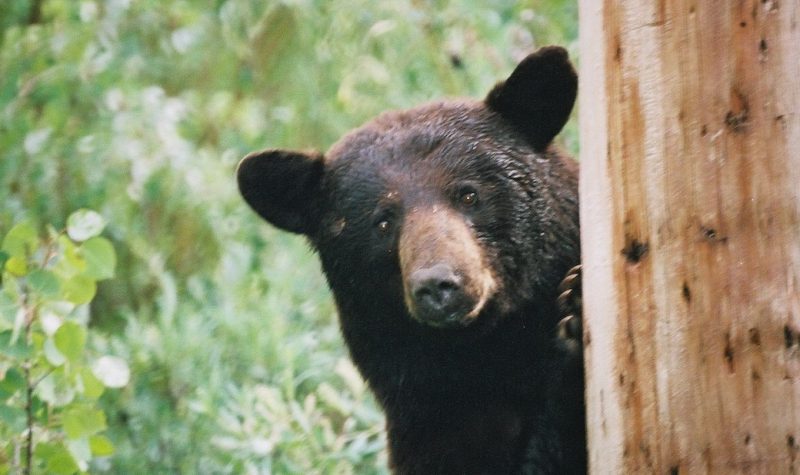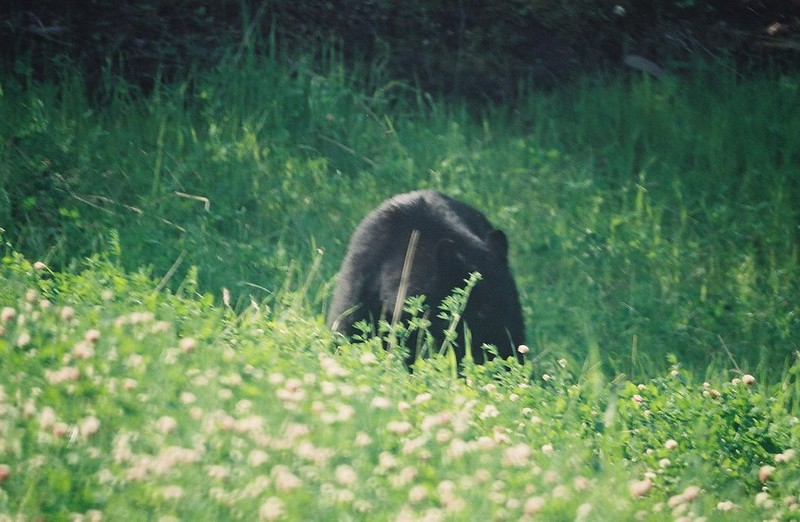By Max Thaysen for Cortes Radio
Whaletown’s black bear is still on the loose – but its days may be numbered.
This summer, a black bear has made the rounds in Whaletown, on Cortes Island, eating up fruit, stealing honey, breaking in to a chicken coop and even attacking a pig (according to community reports on the Tideline and Facebook).
The trap is set
The Conservation Officer Service (COS) received reports from several Cortes Islanders about the bear and responded by bringing a trap over to capture the bear.
We spoke with a conservation officer named Brad about the situation on Cortes and what the plan is for this bear.
If the COS can intervene early in a bear’s career of homestead marauding, then they capture it, tranquilize it, give it an identifying earring and set it free in a distant location. If the bear returns to human spaces, they may escalate the human response.
Once a black bear enters structures
Once a bear begins entering structures, the COS says it must be killed. Relocating a bear with that level of habituation and fearlessness around humans is too great a risk to public safety to release anywhere.
Brad said that they are aware that there could be more than one bear in the area and they rely on eye-witness testimony to identify the offending bear. The bear they catch must match the descriptions before they put the bear to death.
Bears can be hard to catch in a trap, especially when they have plenty of food and have become accustomed to the food humans offer in their yards and porches. Brad says they rely almost entirely on traps for safety reasons – it’s too dangerous to hunt bears in human neighbourhoods.
When animals are captured, they are taken out of town and shot.
What happens to the body?
The COS tries to make best use of animals they kill by finding people to eat them. But only if the bears haven’t been eating garbage – that could make them unsafe to eat. They use the animal’s poop and public reports to determine the fact.
Animals killed by the COS, and safe to eat, are always offered to the local Indigenous people for consumption or processing for ceremonial purposes. Tina Wesley from the Klahoose First Nation says she expects that the bear will come to the Klahoose people. She says they will make use of every part of the bear, for food and regalia.
Traditional foods may be scarce
The food may be extra welcome these days, as the fish that the Klahoose people rely on may not come in this year. Wesley says they may not get the chum that they have gotten for thousands of years — there are not enough fish to go around and conservation comes first.
One Cortes resident wondered if the lack of traditional foods might be what brought the bear around to our neighbourhoods.
Brad says that as a community, we can do our part to prevent human-bear conflicts by preventing bears and other wild creatures from being able to access our fruit trees and compost and livestock. For more information, go to the conservation officer service website by searching BC Conservation Officer Service in your favourite browser search. You’ll find tips on how to keep yourself and the wild animals safe.
Links of interest:
- Aug 26, 2020 – Sabina Leader Mense/ Tideline – UPDATE on Black Bear Activity in the Whaletown Area
- Aug 23, 2020 – Sabina Leader Mense/ Tideline – Black Bear Activity in Whaletown
- July 18, 2020 – Manda Aufochs Gillespie/Cortes Currents – Coexisting with Bears on Cortes Island
- May 10, 2020 – Sabina Leader Mense/ Tideline – Guess What Folks… Cortes Island IS Black Bear Country
- October 2016 – Roy L Hales/ The ECOreport (now Cortes Currents) – Where are Germany’s Bears, Wolves and Eagles?



